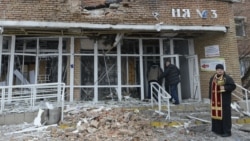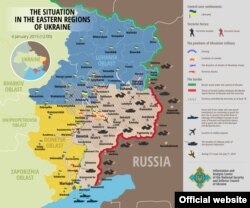More from RFE/RL's News Desk on the new Putin decree:
Russian President Vladimir Putin has issued a decree enabling foreign nationals to serve in the Russian military.
The January 2 decree allows Russian-speaking foreigners aged 18-30 to sign up for five-year service contracts with the Russian armed forces, Interior Ministry troops, or the state firefighting service.
Military analysts said that until now, foreign nationals had to receive Russian citizenship or special documentation in order to serve in the Russian military.
Most foreign soldiers currently serve on their home territory outside of Russia, which has large military bases in Armenia and Tajikistan and a military presence in other parts of the former Soviet Union including Trasndniester in Moldova and the Moscow-backed breakaway regions of Abkhazia and South Ossetia in Georgia.
The decree, however, suggests that foreign soldiers may now be sent abroad in "wartime" situations.
The decree does not appear to be directly ties to the conflict in eastern Ukraine, where Moscow denies it has sent troops to fight alongside pro-Russian separatists.
Here is today's situation map of eastern Ukraine by the National Security and Defense Council:
A beautifully written elegy to a lost Ukraine by Christopher Miller on Mashable:
ARTEMIVSK, Ukraine -- I’m trying to remember the time before the war.
In the days before gunmen and roadblocks, I rode a bicycle down these streets. But the fires and the soldiers I see now get in the way of my memories and make it impossible to see this place as it once appeared.
In this gritty mining town, I practiced Russian and made many lasting friendships. Now I can only think of it as the place where Malaysia Airlines Flight 17 was shot out of the sky, killing all 298 passengers on board.
Four years ago, I hiked over this rolling steppe with a group of friends, setting up a picnic atop the bluff overlooking the city. Now the grass is stained with blood, littered with shell casings and marked by rocket craters.
The school down the road -- where I taught American history and students in school uniforms greeted me in unison every morning, calling out, "glad to see you!" -- had its roof blown off during a shelling. I pray none of my former students were inside when it happened.
When I first arrived four years ago, much of the world had never heard of this place -- or really of any city in eastern Ukraine.
Fast forward to the present moment and the names of these cities, towns and tiny villages have become well-known datelines -- the front lines of a conflict that has killed more than 4,300 people. More than a million others have fled or been displaced.
Though I knew returning might be dangerous, I wanted to document what was happening in this part of the world in an attempt to understand how the war had changed the lives of those I once broke bread with.
But I had no idea what I was in for.
Now, months later, I know what war looks like. I have huddled with frightened civilians as they cowered under a hail of missiles. I know the stench of decomposing bodies; the stomach-churning sight of a roadblock manned by trigger-happy drunken militias, and the sound of artillery fire -- 'the Donbass symphony,' as a friend of mine calls it.
Read the entire article here.





